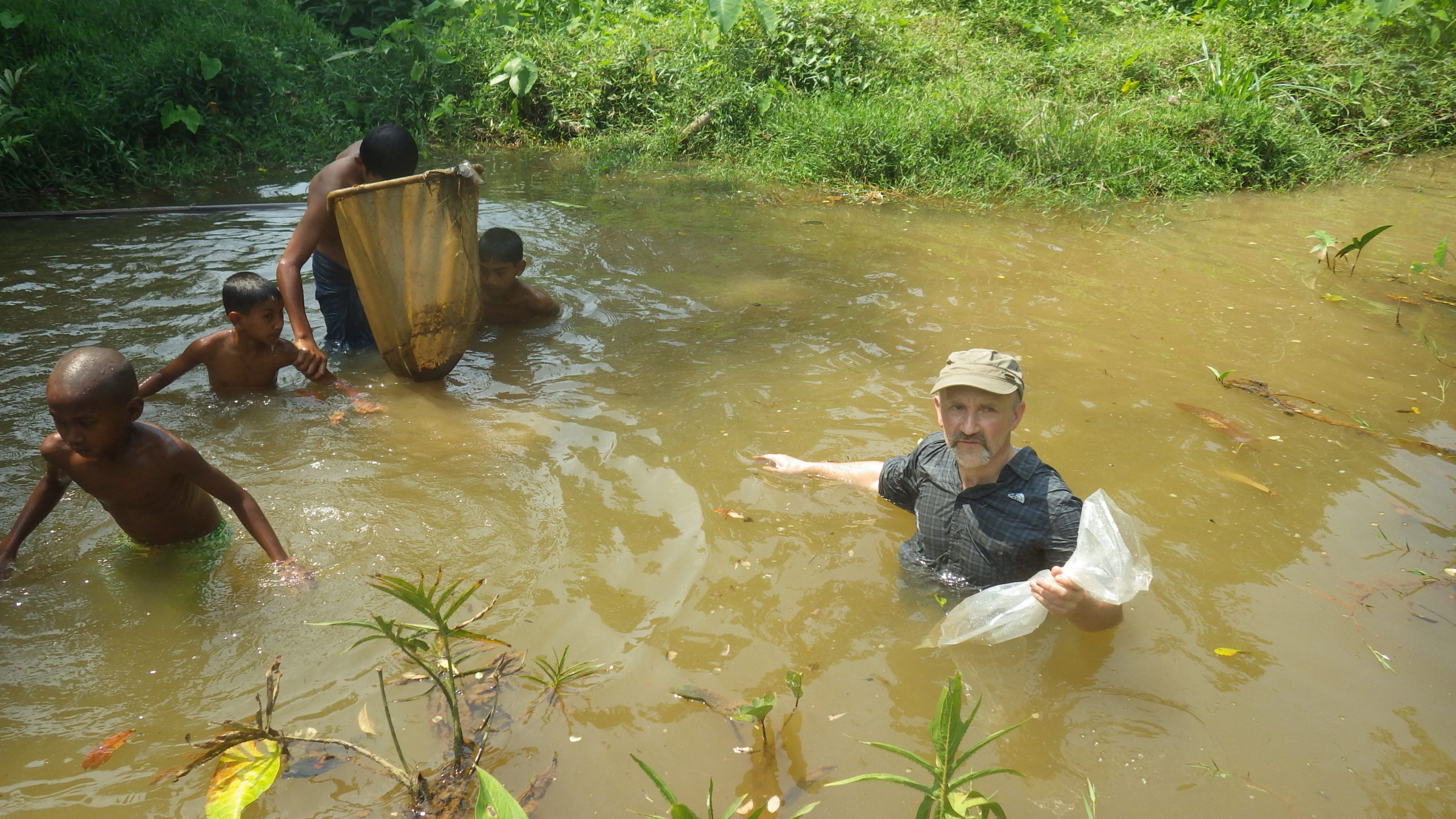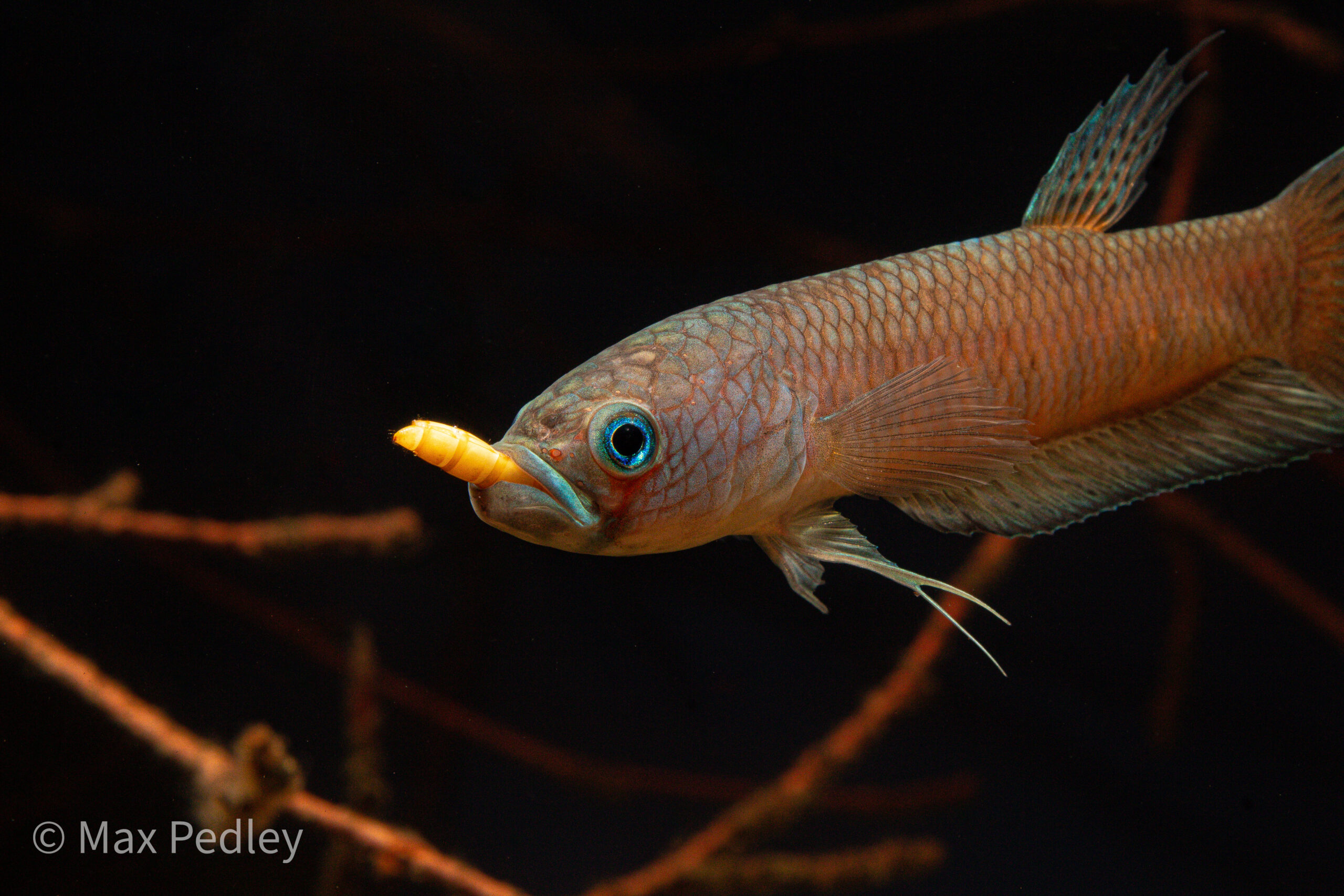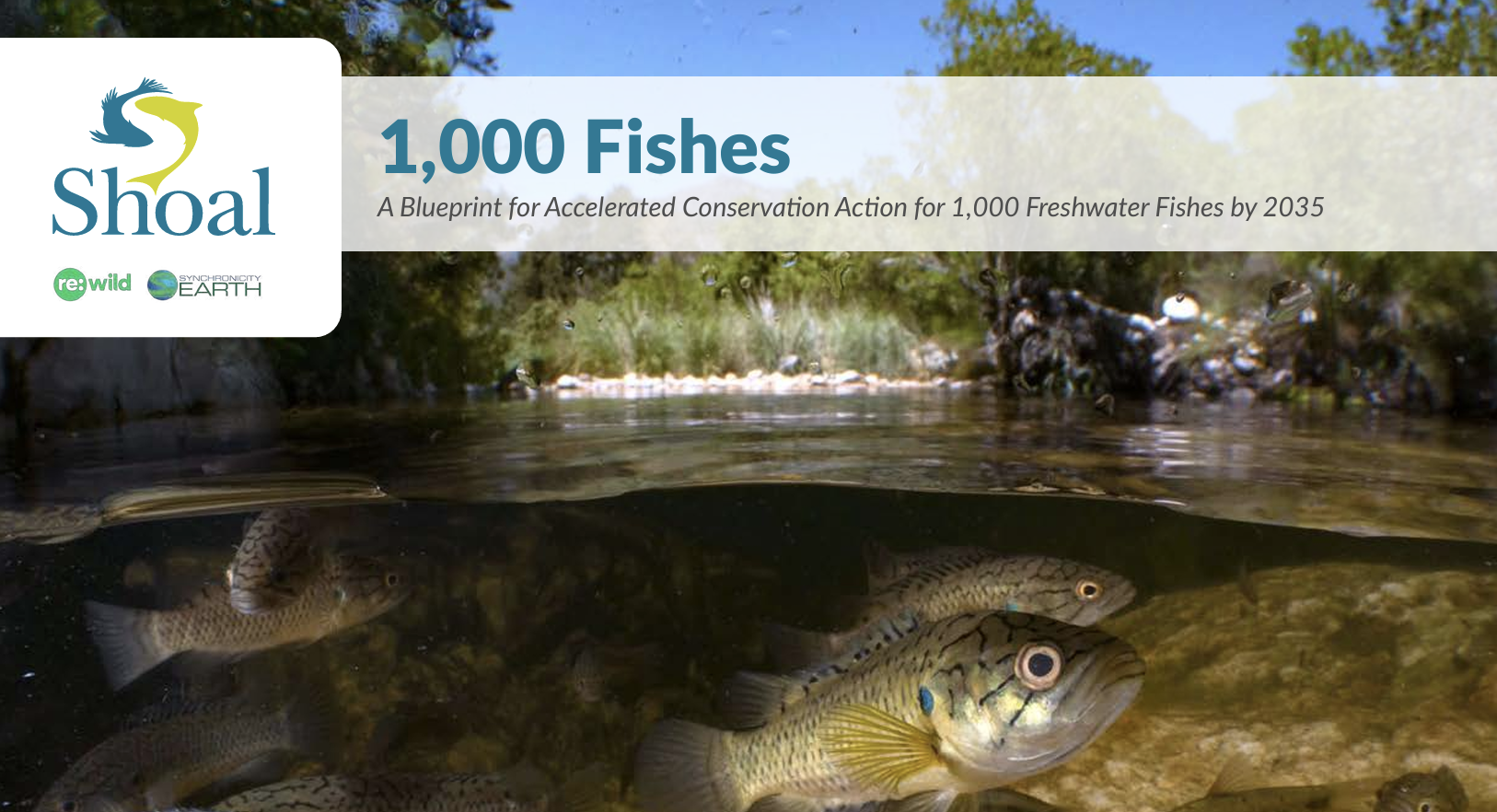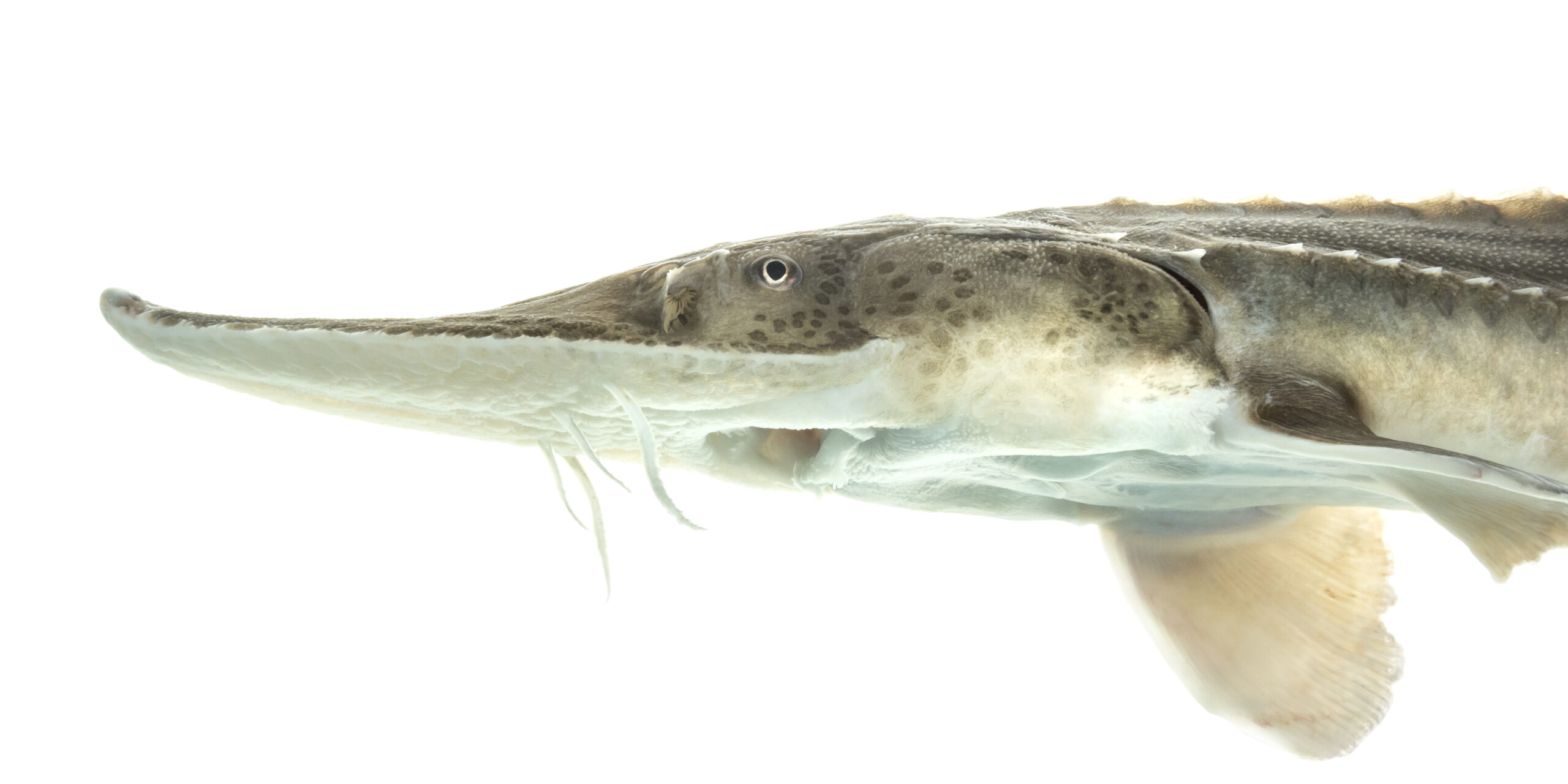© Eleanor Adamson
Describing new species: an interview with Ralf Britz
Dr. Ralf Britz is a leading ichthyologist and taxonomist, and Head of the Ichthyology Section at Senckenberg World of Biodiversity. He has been involved in a total of 73 species descriptions and has been a key team member in the discovery of seven species which needed the creation of new genera. He was also the lead author on two papers describing the Gollum snakehead Aenigmachanna gollum: a new species in a new genus in an entirely new family.
With Shoal’s release of a landmark New Species 2021 report tomorrow, we caught up with Ralf to get the low-down on what discovering and describing new species really means.
What does it mean to describe a species, and how is it done?
When you describe a new species scientifically this process is often referred to among the public as having identified a new species. The process starts with the impression that you have found a species that does not have a scientific name, i.e. it is unknown scientifically. You then need to compare your specimens of what you think may be a new species with specimens of similar species that already have a name.
As taxonomy is one of the oldest scientific biological disciplines, this can be quite a cumbersome process, because you have to deal with all the species descriptions since and including Linnaeus’ 10th edition of his Systema naturae, published in 1758 and the starting point of animal taxonomy. If you are lucky and the group you work on has only a few species, then it is easy to compare your material with already collected material of the other species. This usually involves comparison with what we call type specimens, the specimens used to describe species. One of these type specimens is chosen as the holotype, the actual name bearer, the one specimen that is permanently linked to that name. These are stored ideally in publicly accessible museum collections. If, after comparison, you find that the specimens of what you thought were a new species are identical to one of the already described ones, then that is the end of the story. But if you find consistent and significant differences to all the known species in the group you are studying then you have probably found a new species.
The next step is then to write up a scientific manuscript in which you detail how your new species differs from already described (named) species, and you propose a name for it. The name may refer to a characteristic feature of the new species, or the place where it was collected, or it may honour a person, such as the person who collected it, an influential colleague or someone who supported your work.
In most cases the new name concerns just the new species. But sometimes you find an organism that you cannot easily fit into a larger group of similar and closely related species, a group we call a genus. In this case you may need to create a new genus for this new species. Here, the same rules apply you need to check all genera (plural of genus) in the larger group of organisms (a group we call a family). If you find you cannot fit it into one of the known genera, you can describe a new genus.
Once you have written up your findings relating to a new species or new genus, you submit your manuscript to a scientific journal for peer review. This means the manuscript is sent to other experts in the field who read your manuscript and point out potential problems, errors, mistakes etc. They provide the quality check before a manuscript is accepted and then published. They may ask you to revise your manuscript, check sources you may have overlooked, ask for additional details, or if you have made some major mistakes, suggest to reject your manuscript. If you have done your job, though, it may need no or just minor revision and will then get accepted for publication. Once it is published by a scientific journal and you have made sure you followed all the necessary steps that are required by the Code of Zoological Nomenclature – a set of rules that determine what has to be done for a name to be published in a valid way – then the new species is officially described and carries the name you have chosen.
I want to briefly touch on a worrying aspect of species descriptions that has started to plague taxonomy: the unholy alliance between self-proclaimed taxonomists and journals that will publish anything of any quality if you pay for it, the so-called predatory journals. There is an increasing number of manuscripts getting published which did not go through the strict and necessary step of peer review. Publication of these poor-quality species descriptions is a problem, because you cannot just ignore them as in other areas of science where poor papers just disappear in the garbage dump of scientific publications. Even poor-quality papers that describe new species will need to be considered due to the specific rules of nomenclature that need to be applied. Showing that these manuscripts are poor quality, and that the so-called new species is actually not new often involves so much more work, effort, time and money from you than the person invested who wrote the poor-quality manuscript. I know of cases in which one person described more than 20 new species from a well-known area of the world, all in predatory journals and with not a single of these so called new species really being new. Imagine that for each of these 20 or so new species you need to demonstrate that the original paper describing them is of poor quality and that these are not new species. This means you waste precious time, in which you could have described 20 new species with the level of quality that is necessary and is guaranteed by a proper peer review. Such taxonomic vandalism, as it has been termed, hampers the discovery of new species in a time when diversity is disappearing at an alarming rate.
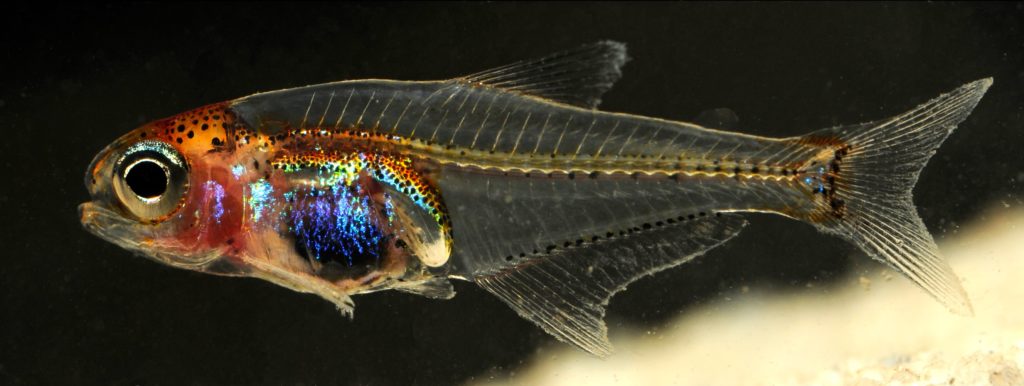
Cyanogaster noctivaga © Ralf Britz
Are there any species descriptions you’ve been involved with that you found particularly memorable or noteworthy?
Oh yes, absolutely. I have a soft spot for the weird and wonderful. I was involved in the description of Paedocypris progenetica, the smallest fish and vertebrate species. Then Danionella dracula, an equally tiny relative of D. cerebrum. But D. dracula has impressive large fangs. Then there was a new species and genus of earthworm eel from Myanmar, which I named after my daughter, Pillaiabrachia siniae. And during night collecting in the Rio Negro in the Amazon basin we found a new brilliantly blue coloured little fish, the blue bellied night wanderer, as we named it, Cyanogaster noctivaga. But the most memorable is Aenigmachanna gollum. When I first saw a photo shared on social media and sent to me by my colleague Rajeev Raghavan from Kochi, my heart stopped, as I had no idea what kind of fish I was looking at. Well, it ended up in a genus and family of its own.
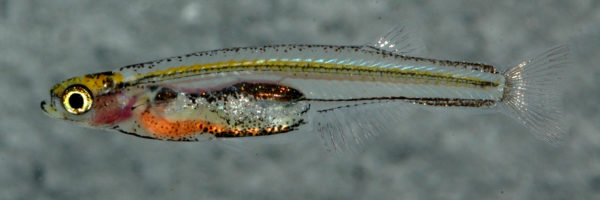
Danionella dracula female © Erwin Schraml

Pillaiabrachia siniae © Ralf Britz
212 new freshwater fish species sounds like a lot in one year. What does this level of discovery tell us about the extent of what remains unknown in the planet’s freshwaters?
It sounds like a lot, but this has been the general trend of freshwater species discovery over the last few decades. There are still large parts of our planet that have not been explored and we keep discovering new animals that we had no idea existed. Finding a new species of an already established genus is exciting, but discovering entirely unknown lineages of higher taxonomic categories still today teaches us how much we do not know. And then keep in mind that only a tiny, tiny fraction of earth’s water volume, just around 0.03%, is freshwater in lakes and rivers and habitable for fishes. And yet, we have all this incredible diversity there. Mindboggling.
What is it about freshwater that leads to such incredible biodiversity?
I would say it is the more local situation and more diverse habitats that you get in freshwaters: you have river basins that are separated by land from other basins. There species evolve that are endemic to this river basin. Then you have ecological separations of river mouths from lowland parts of the rivers, separation of these from the more mountainous faster flowing parts of rivers and finally the rapidly flowing headwaters. This leads to endemism in different parts of the same river. These different parts of the same river will not only differ in the velocity of the water but also in the water temperature, amount of dissolved oxygen, pH, conductivity. Imagine that you have this basically in every major river.
Add this to the fact that through geological events over millions of years you have separations of parts of rivers and reunion of others, so there is a multitude of habitats changing over time and often very restricted endemisms.
All of these factors together act as species pumps that are obviously working much faster than in the oceans.
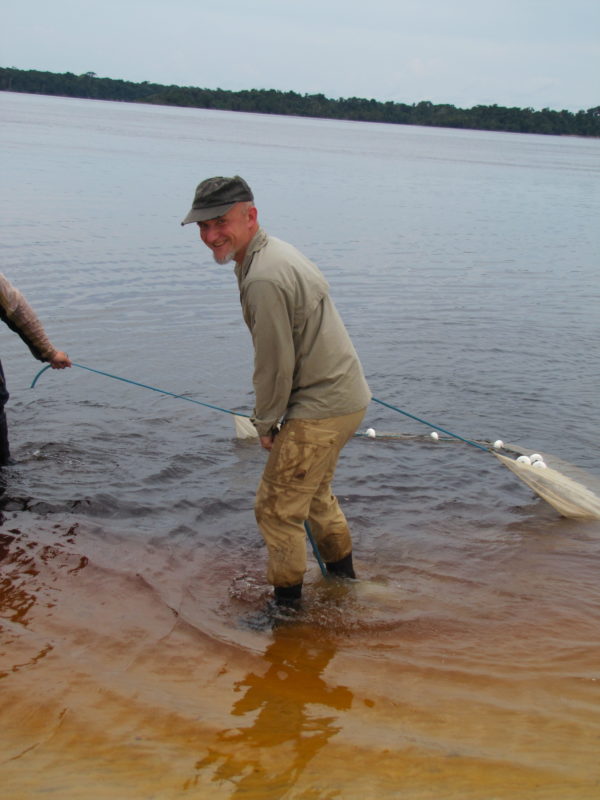
Ralf collecting in the Rio Negro © Manuela Marinho
Why is it important to discover and describe new species?
There are many different aspects to this question. One is this: if we consider the entire picture of lifeforms that evolution has produced on our planet, then we would miss many pieces of a complex puzzle if we stopped exploring. Think of the painting of Mona Lisa with hundreds of thousands of holes in it. You would not want to look at that.
Understanding diversity may also enable us to better understand how this diversity interacts. Something may seem insignificant but is sometimes of the greatest importance. Just think of invasive species, pests of crops, indicator species that help you evaluate the quality of a habitat and our environment. New species may become important in research: just think of the zebrafish discovered back in 1822 but also Danionella cerebrum only described last year. New species are pieces of the evolutionary puzzle we did not know existed and because of that we had no idea what they may have to offer.
Do you think it is important for people to care that new species are still being discovered and described? Why?
My experience is that people are generally excited when you tell them about new species discoveries. To imagine there is still so much out there that is unknown to us is a fascinating thought.
It is also more urgent than ever that we go out and discover, as the diversity is disappearing fast. Just think of the image of Mona Lisa with the hundreds of thousands of holes. Would
it not make you sad to know that these will never be filled as the species disappeared before we identified them?
What can we hope to learn from new species discoveries and descriptions?
The most important part we can learn is that there are so many fascinating organisms out there that we have not even discovered. Sometimes it is a new species that looks very much like one we already know, but often we discover a true gem, something unimaginable, unexpected, something we would have bet money does not exist. And these are special moments when you sit there quietly in awe of the evolutionary diversity our planet has produced.
Is there anything you would like to add?
Taxonomy, discovering, describing and understanding the evolutionary diversity that surrounds us to me is one of the most satisfying parts of my life. I would never trade it for anything else.
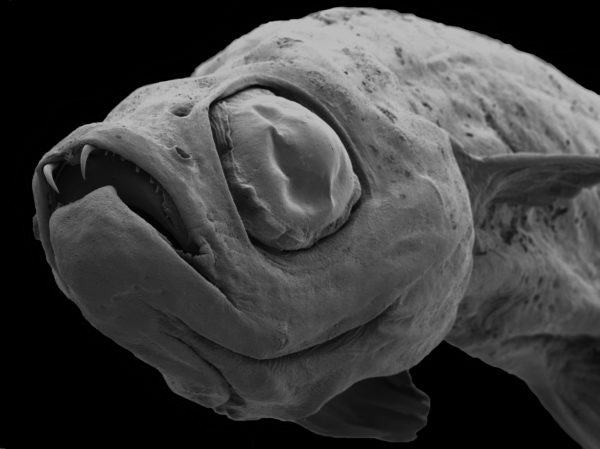
Danionella dracula scanning electron microscope image © Ralf Britz

